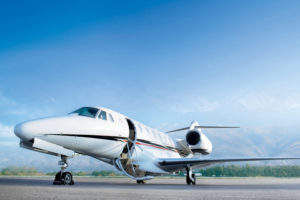 Recently our firm has reviewed numerous “dry” leases for aircraft which would likely be considered illegal part 135 charter operations, and not part 91 dry leases. Operators which engage in illegal air charter expose themselves to FAA and civil liability, as well as negate their insurance coverage, and expose their air crew to FAA certificate actions. Dry leases represent a unique challenge, because unscrupulous operators may attempt to disguise illegal part 135 operations as dry leases, and unsophisticated parties may end up inadvertently drafting dry leases for operations that should be conducted under Part 135.
Recently our firm has reviewed numerous “dry” leases for aircraft which would likely be considered illegal part 135 charter operations, and not part 91 dry leases. Operators which engage in illegal air charter expose themselves to FAA and civil liability, as well as negate their insurance coverage, and expose their air crew to FAA certificate actions. Dry leases represent a unique challenge, because unscrupulous operators may attempt to disguise illegal part 135 operations as dry leases, and unsophisticated parties may end up inadvertently drafting dry leases for operations that should be conducted under Part 135.
In determining whether an operation should be conducted under Part 135 rather than under Part 91, the FAA will examine whether the flight consists of Common Carriage. For FAA purposes, Common Carriage is defined as 1) a holding out of a willingness to (2) transport persons or property (3) from place to place (4) for compensation. Each of these terms has a specific meaning in FAA and NTSB case law.
“Holding out a willingness” represents a very low bar. To be considered “holding out” operators only need to communicate to interested parties that they are willing to conduct air transportation. Wide scale advertising is not required, and even word of mouth referrals could constitute “holding out.”
“Transporting persons or property from place to place” is self-explanatory, requiring only that passengers or property be moved from one spot to another. Certain operations such as aerial photography, or other forms of aerial work, are not common carriage because they do not involve the transportation of a person or property from place to place.
Finally, “for compensation” requires that an operator receive some form of compensation for the flight. The FAA has defined compensation very broadly to include, in certain cases, good will. Compensation becomes an issue when the operator of the flight is separate from the beneficiary or passengers on the flight. That is, when the entity operating the flight receives some payment from the passengers on the flight, and the passengers are a separate entity from the operator.
Determining who is the operator of a flight, requires an analysis of who possesses “operational control” for a flight. To determine who possesses operational control the FAA will look primarily at who provides the pilots for the flights, but also at numerous other “indica of operational control” including who provides the aircraft, the insurance, the customers, and the maintenance.
Dry leases that are improperly structured separate the operator of the flight from the beneficiaries of the flight, and as a result could be viewed by the FAA as common carriage operations which should have been operated under Part 135.
The FAA has placed increased scrutiny on dry leases, and operators that operate illegal part 135 flights may receive large civil penalties from the FAA. Aircraft owners that allow their aircraft to be used for illegal Part 135 operations may also end up with FAA civil penalties, in addition to invalidating their insurance coverage, and exposing themselves to civil liability. Finally, the pilots that operate illegal 135 flights may end up having their pilot certificates suspended or revoked.
Operators, aircraft owners, and pilots that use dry leases should have these leases carefully reviewed by aviation attorneys to be certain that they are not operating illegal Part 135 flights.
The information in this article is intended to highlight potential issues with aircraft ownership and operationsand is therefore general in nature. Please feel free to contact one of our experienced aviation attorneys directly to discuss your specific business/personal needs.

